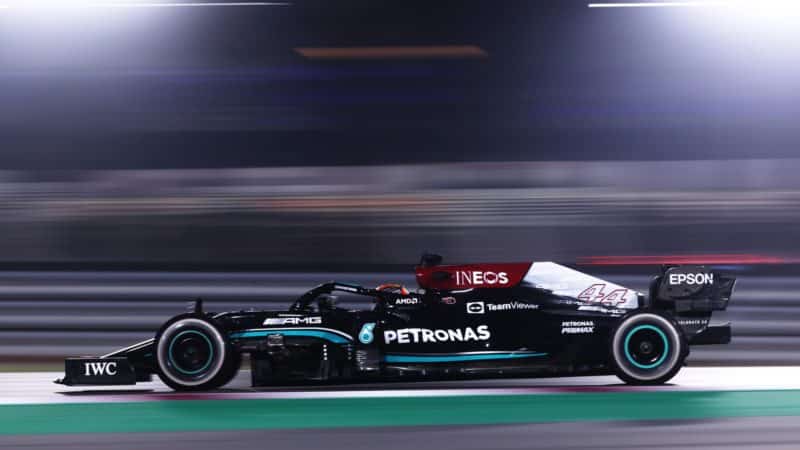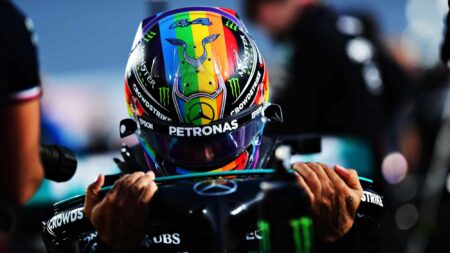“In 2019 we had what was quite a dominant car and yet we were beaten quite handily at Interlagos by Red Bull. When we looked at the aero package, the mechanical package, the power unit, we weren’t finding answers as to why were we so poor in 2019. So it was all about set-up. We were determined to rethink things and come here with a car which could set pole position.”
Although it was attacked as a problem specific to Interlagos, it seems the rethink may have put the car in that place where Hamilton can conjure more than the sum of the parts. Even prior to this year, Hamilton has talked about how he spent years challenging the aero team to see if they could nudge the aero balance rearwards whilst still retaining the required efficiencies. And how each year they’d been able to do that a little more until by 2020 he finally had a car which he loved, in which he could attack the corner entry super-aggressively, knowing that it would respond and that the back would keep up. Each year since the regulation reset of 2017, Merc had delivered a car ever-more towards Hamilton’s preference.
The ’21 regulation trimming of the floor and associated changes at the rear obliterated that. It cost the low-rake Mercedes performance of itself, but it also put Hamilton back in a car which he couldn’t drive the way he had been driving last year. There is performance in a car which is unmeasurable in any simulation – because it’s about whether it has the traits and feedback loops that instil the level of super-confidence that allows the best performers to move to a different level.
Is it possible that the Interlagos rethink – perhaps aided by how potentially powerful the diffuser stall has become since the Silverstone upgrade and the bigger rear wings and set-up windows that allows – has quite accidentally brought more than anyone realised was there?







